COVID-19 has dramatically impacted the day-to-day operations of banks.
Nevertheless, we see and help best-in-class financial institutions further automate their credit decisions and early warning systems by cleverly re-using the technologies and data they already have at their disposal. They digitalize inputs via online acquisition flows, OCR-based evidence validation, and automating existing decision frameworks with robotics process automation modules. Next to that, they are calculating aggregated provisions based on sector-dependent models, creating 360° client views alimented with data from outside the organization, and manage their in- and outbound communication flows automatically. But regardless of what they are doing, they are also automating where possible, in order to focus their human touch on where it has the biggest impact.
NEXT
In the NEXT, we aim to zoom in on what is to be expected once supporting regulatory measures come to an end. COVID-19 has shocked the Belgian economy, with a few sectors, in particular, being hit very hard (e.g. travel, Horeca, events industry, etc.). Once supporting measures fade, a number of both retail and professional clients will be exposed to even more financial distress. Regulators are clear in this regard: both the EBA and ECB highlight that banks should be well prepared to manage the impact of the crisis and become proactive in tackling the upcoming deterioration in asset quality. A twofold or even threefold increase in non-performing loans (NPL) is expected in 2021, particularly once public support measures, such as moratoria expire. While this will be a terrible situation for a large part of society, it could also have a consequence few people mention: an increase in the workload of arrears management departments… by up to 70%.
Banks have to shift from a reactive, crisis mindset, to a proactive approach, so they can reduce the unknown and manage volatility.
Now, how can financial institutions avoid tumbling right into the cliff? They need to embrace the societal responsibility that is theirs. Banks must shift from a reactive, crisis mindset, to a proactive approach, so they can reduce the unknown and manage volatility. Key actions to take are to proactively identify risk-sensitive clients or industries and to approach them accordingly. They need to identify and measure the client’s resilience, and actively enhance it. Sharing sector insights, best practices and testimonials, supporting alternative streams of income… this is a small investment if it can avoid loans from going into default. It is already clear that the bank of the future is not purely a financial advisor, but a trusted, perhaps more embedded, business advisor.
This proactive approach will allow financial institutions to limit additional provisioning costs and have better insight into what is to be expected in terms of future arrears management. This relies however on the accessibility of additional data, whether this data already exists within the organization or is easily available in the market. The ultimate objective is to evolve towards the same automation systems and data framework for the whole credit lifecycle, from start to end.
By enriching their models with new data, banks can improve the acceptance decision process and create a monitoring system of the creditworthiness of their prospects and clients throughout the whole credit lifecycle. This allows them to move to more dynamic monitoring of their portfolio. E.g. transaction data can be used to monitor the debt-to-income ratio. This is certainly relevant during COVID-19 times as payment holidays may mask a deterioration of the credit quality of certain borrowers. We note that this topic also attracts regulatory attention. The newest EBA guidelines that will take effect as of 30 June 2021 state that “Institutions should continuously monitor and assess the quality of credit exposures and the financial situation of borrowers, based on internal information regarding borrowers payment practices and external sources”. We conclude that installing a more dynamic monitoring process of credit portfolio does not only lead to better risk management but will also improve regulatory compliance.
BEYOND
COVID-19 has already left its mark on 2020 but the financial services industry will also have to manage the aftermath in 2021 and BEYOND, especially with regard to the expected surge in non-performing loans.
It is important to recognize that traditional forbearance solutions may no longer be palatable for customers, regulators and shareholders. The scarcity of skilled resources combined with a fragmented operating model negatively impacts the ability to deliver a consistent change at scale. Furthermore, the under-investment in digital solutions relative to other bank functions impedes the ability to deal with spikes in volumes. Last but not least, the ‘ramp down mode’ of arrears management functions may no longer be as viable as it was under past economic growth. This time, the real economy has been impacted, and, as such, reassessing the allocated investments in arrears management departments is in order.
Financial institutions should reconsider whether their operation is ready for the post-COVID environment.
Also, it has become more expensive for banks to have non-performing loans on their balance sheet due to the calendarization of the prudential provisioning for NPL. Therefore, even more data and innovative self-learning models will allow them to further refine their NPL. Reaching a point where there is a universe of data available, Machine Learning models can help banks identify those data elements that can help them make better decisions. Although the final model may be a simple one, they may still consider using Machine Learning to find new signals and keep their human expertise to translate them into the right business decisions.
These models will still be limited to the observations that are available to them. This is where federated learning comes in. For the sector to gain insights collectively, individual data models can use shared observations via a service developed by a federated structure. With federated learning, they can learn from mistakes without having to make them. Like spam filters learn to identify malicious emails without sharing the content of the individual mails.
Ultimately, these models will pro-actively help lenders to better fulfill their credit obligations, hence strengthening the relationship and services financial institutions should provide to their clients.
Insights on Lending platform modernization: target, options and recommendations
It is important to consider the multiple options that exist on the market, combining packaged-based solutions and custom-built solutions. The bank’s strategy and ambition for its lending business are key to make the right choices between the multiple solutions that are available in the market, especially given the rapid evolution of game-changing technologies.
Just as important in the success of the banks’ modernization program is the migration strategy. Here, based on their business plan, the focus should initially be put on experience-driven transformation, on the operational efficiency-driven transformation, or, last but not least, on product innovation transformation.
We’ve identified six recommendations to support banks in their successful platform modernization journey, more precisely:
- A clear vision of products and processes, to align banks’ product and operational strategy with the target solution, starting from a standard business process catalog and ending with a clear data model aligned with their products and processes.
- In the current market, a move to the cloud is definitely to be considered as an accelerator for a modernization program, as it makes infrastructure affordable, scalable on-demand, and always up to date.
- When looking for a packaged-based solution, it is key to require from the vendor the availability of a sandbox environment where the solution and its connectivity can be tested and prototyped with the bank’s legacy environment through APIs. These “Deep-dive” and “Prototype” phases are critical to assess in detail the “out-of-the-box” or “plain vanilla” solution from the vendor. This is necessary to understand what organizational changes will need to be performed within the organization to fit with the selected package.
- When the solution is confirmed, define a roadmap that is progressively delivering business value to keep the momentum with the business stakeholders. Adequately sequencing client and product features based on the delivered IT components will allow generating business value all along with the modernization program.
- A modern data platform is required to support a wide range of data-intensive use cases supporting business analytics. Thus, on the one hand, it should improve the insights in the lending business and intelligent process automation and, on the other hand, drive automation through the lending process. Data becomes even more powerful when it can be smartly combined with intelligent process automation, which combines Robotics Process Automation and Artificial Intelligence, or more precisely a mix of tools and techniques such as OCR, speech recognition, Machine Learning and Natural Language Processing techniques.
- Finally, strong requirement engineering is key to ensure the new platform is responding to the business expectations. Therefore, the use of multi-disciplinary teams that are closely connected, and steered by an empowered product owner, is a preliminary requirement. When this is combined with an industrialized requirement engineering process, supported by dynamic backlog management, and linked to a modular and automated testing approach, the program is on its way to success.
Newsletters EY Belgium
Subscribe to one of our newsletters and stay up to date of our latest news, insights, events or more.
Summary
The COVID-19 context is a wake-up call for banks to review their lending operations to benefit from modern and data-driven infrastructures. Going through three-time horizons, this article provides multiple recommendations for banks to modernize their lending platform.


